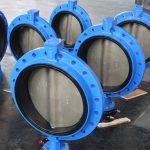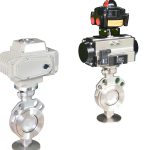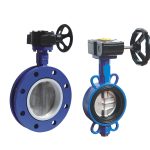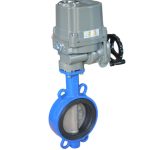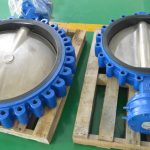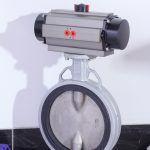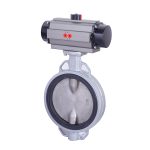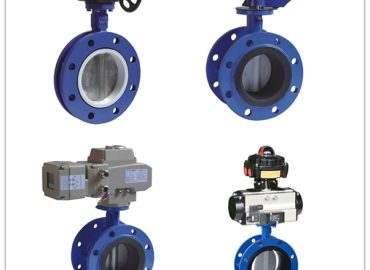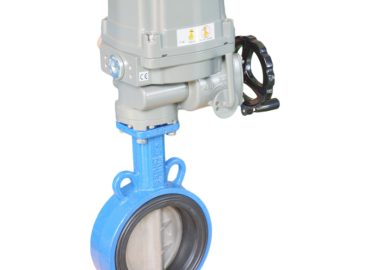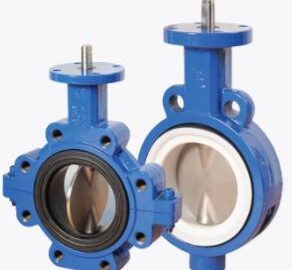Motorized butterfly valves are commonly used in industrial applications due to their ability to regulate the flow of fluids, gases, and other materials with precision.This makes them an ideal choice for many process control scenarios.In this blog post, we’ll explore the different types of motorized butterfly valves available, the benefits they offer and the important factors you should consider when selecting one for your needs.
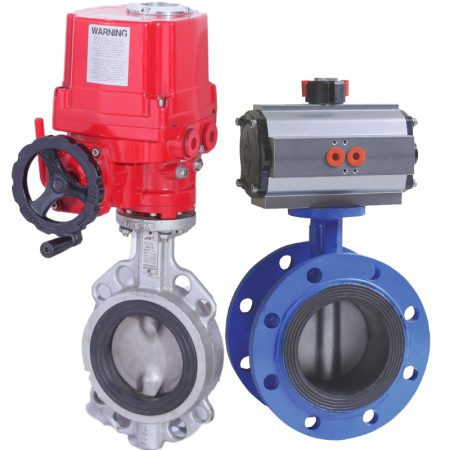
Introduction to Electric Butterfly Valve
electric butterfly valves are versatile and reliable valves used in a variety of industrial applications. These valves feature a disk-shaped valve body mounted on a shaft which is actuated by an electric motor or other power source to rotate and open/close the valve. This makes them an ideal choice for many process control scenarios, such as adjusting water pressure, distributing air supply or controlling chemical flows.
The major advantages of using motorized butterfly valves are their precision and accuracy when controlling flow, as well as their ability to be automated via the use of controllers. The range of motorized butterfly valve designs available includes diaphragm valves, plug and sleeve type valves and ball valves, each with their own benefits depending on the application requirements. When selecting one for your needs there are important factors that you should consider such as pressure rating, seal material, flow control capabilities and type of actuator to ensure you choose the most suitable model.
Overview of Different Types of Motorized Butterfly Valve
Motorized butterfly valves come in many different types and designs, each with their own set of features and benefits for different applications. Diaphragm valves are the most common type and feature a fabric-reinforced rubber diaphragm supported by a metal plate.This ensures tight shutoff while allowing easy automation of the valve using an electric, pneumatic or hydraulic actuator.
Plug and sleeve type valves are known for being highly durable with high flow capacity, while ball valves offer even better control of very small flows. Each type of motorized butterfly valve has its own advantages and it is important to understand them before choosing the right one for your application needs. They all work on the same basic principle – rotating a disc-shaped valve body on a shaft which opens or closes off fluid flow when actuated by an electric motor or other power source.
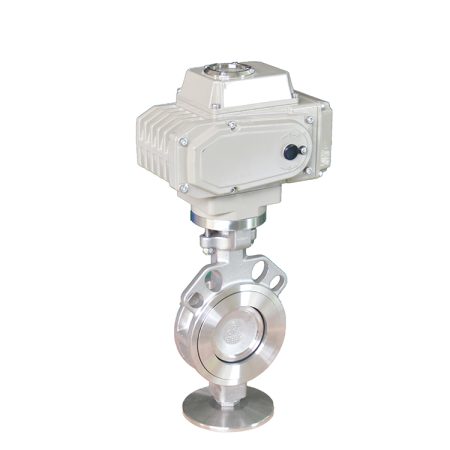
Diaphragm valves
Diaphragm valves are a type of motorized butterfly valves that feature a reinforced rubber diaphragm supported with a metal plate. This ensures tight shutoff while allowing easy automation of the valve using an electric, pneumatic or hydraulic actuator. The valve body is made up of two seats and three separate parts that control flow when actuated. Other benefits of diaphragm valves include its ability to perform reliably in extreme temperatures and pressures, as well as its resistance to corrosion, abrasion and wear. These valves are best suited for applications where tight sealing and accurate flow control are required.
Plug and sleeve type valves
Plug and sleeve type valves are a specific type of motorized butterfly valve that are known for their high durability and flow capacity. As the name suggests, this type of valve uses a plug to control the flow – when fully open the plug moves downwards, allowing fluid to pass through, and when closed the plug is brought up, blocking any flow. This system offers tighter control than ball valves, allowing more precise regulation of small flows. They also generally require less maintenance due to their simpler design. Plug and sleeve type valves are ideal for applications involving higher pressure or temperature as they can withstand greater force without sacrificing sealing performance.
Ball valves
Ball valves are one of the most popular types of motorized butterfly valves due to their robustness and reliable performance. They feature a spherical disc that turns on its axis to control the flow, with a tight seal being formed when in the closed position. This type of valve offers superior sealing capabilities compared to other valves, ensuring minimal leaks or blockages. Ball valves can handle high pressures and temperatures and withstand higher mechanical loads than other butterfly valves designs. Additionally, they come in a wide variety of sizes, from small fractional inch sizes up to larger industrial sized connections.
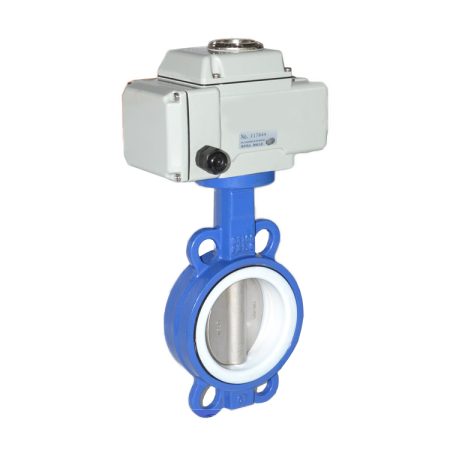
Benefits of Using Motorized Butterfly Valves in Industrial Applications
Motorized butterfly valves are commonly used in industrial applications, due to the range of benefits they offer. Their unique design allows them to be installed quickly and easily, helping reduce downtime and costs. Furthermore, their compact body size makes them an ideal choice for applications where space is a concern.
The motorized system offers more precise flow control than manual butterfly valve systems, as the motor can quickly adjust the valve’s position without needing any maintenance or intervention from operators. Additionally, because of their superior sealing capabilities, motorized butterfly valves can help ensure almost zero leakage while still offering high levels of flow capacity. Finally, they require minimal maintenance and can last for years with proper care and regular inspections.
Factors To Consider When Choosing a Motorized Butterfly Valve
When choosing a motorized butterfly valve, there are several important factors to consider. Firstly, the valve should be able to handle the pressures and temperatures that it will be exposed to in the industrial application. Additionally, careful consideration should be given to the size and material of the valve as these are important in terms of flow capacity and performance. Furthermore, compatibility with existing systems is another key factor that needs to be considered when selecting a suitable valve.
Finally, consider whether or not you require an on/off or modulating valve system – depending on your requirements one type may be more suitable than the other. All of these aspects must be thought through carefully in order to make sure you select the right motorized butterfly valve for your application.
Valve size and design
The size and design of a valve is an important consideration when selecting the right motorized butterfly valve for an industrial application. For example, in order to provide the necessary flow capacity for a specific task, engineers must ensure that they select the correct size and shape valve.I n addition, motorized butterfly valves come in a range of designs and configurations – all tailored to different applications.
Different types of seals may also be used depending on the pressure and temperature rating that are required.Ultimately, careful selection of both size and design can ensure that you get the best possible performance from your motorized butterfly valve.
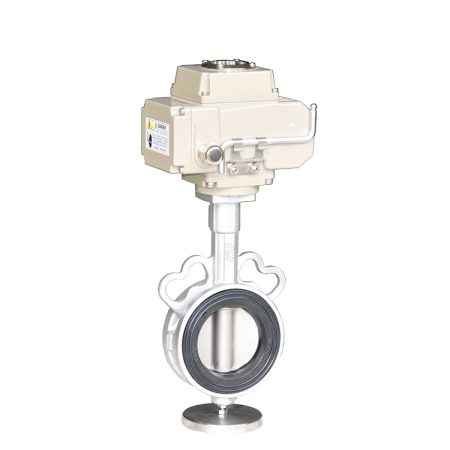
Pressure ratings
Pressure ratings are an important factor to consider when selecting a motorized butterfly valve. Pressure ratings indicate how much pressure the valve can withstand before it fails or begins to show signs of wear. As such, it is essential that engineers select a valve with an appropriate rating for the application in question – anything too weak and it won’t be able to handle the pressures and temperatures it will face in its intended use. It is also important to ensure that the drive mechanism of the motorized butterfly valve is compatible with the existing system – otherwise there is a risk of equipment damage due to incorrect pressure ratings.
Materials used for valve construction
The materials used in the construction of motorized butterfly valves are very important. For example, corrosion-resistant metals such as stainless steel and titanium are often preferred due to their durability and longevity. In addition, plastics such as polyvinyl chloride (PVC) or polypropylene (PP) can be durable enough for use in some industrial applications. Whatever material is chosen, it must be able to withstand the forces of pressure and temperature expected in its intended environment – otherwise the valve will not perform as efficiently as required.
Final Thoughts on Selecting the Right Motorized Butterfly Valve for Your Needs
When it comes to selecting the right motorized butterfly valve for your needs, there are many considerations that must be taken into account. It is important to select a valve with an appropriate pressure rating for the application in question, as well as one that is compatible with your existing system.

It is also important to consider materials used in the construction of the valve – metals like stainless steel and titanium are usually preferable due to their durability and longevity. Additionally, ask yourself whether a manual or automated motorized butterfly valve would be best suited to your needs – automated valves allow you greater control over operation while manual valves tend to require less maintenance and repairs.Finally, make sure that you take into consideration any applicable certifications or approvals when purchasing a motorized butterfly valve. Doing so will ensure that you have peace of mind knowing that the product meets safety standards and regulations.




